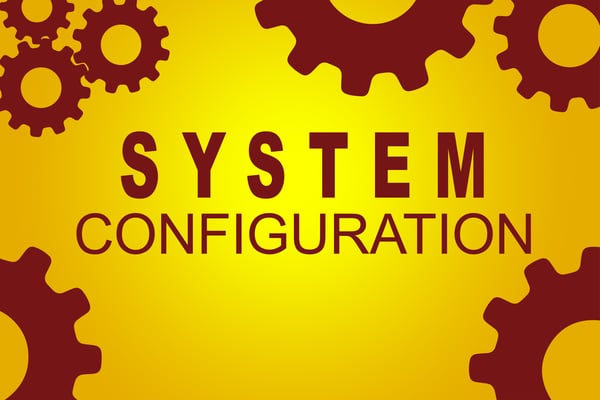
Modifications, customizations, and configurations can make a great ERP system even better by aligning technology with optimal business processes. There are many reasons to configure systems, such as adding user fields to existing forms or placing constraints on fields to support accurate data entry. Before decisions are made to configure your ERP technology, consider three important questions:
- How does your system handle configurations?
- Are other options available to meet user requirements?
- Are these options making it too difficult to apply patches and updates in the system?
How does your system handle configurations?
Some systems are setup to keep the base code in pristine shape. Before any attempts are made to configure the system, the base code is first copied, and all configuration changes are made to the replica. In other words, the configuration sits above the base code, leaving the original base code untouched. Typically, in these systems, patches and updates are made to the base code, leaving the changed copy that sits above it untouched. This means that any updates to the base code that has a configuration sitting above it won’t be realized in the system automatically and would need to be reapplied.
Some systems allow changes directly to the base code. In these situations, patches and updates are made to system language that has been altered. This is problematic as it can cause issues during the patch/upgrade process when the programs try to change the modified code.
Are other options available to meet user requirements?
The top priority when contemplating system modifications is to mitigate risk to system stability and performance. While mistakes could happen during system modification efforts, both IT and the business should be on board to support the same goals for success. If the potential for mistakes does not hinder business operations, could there an opportunity for IT to empower users to take more ownership of the system by:
- Utilizing reports and reporting tools to gain greater visibility
- Increasing end-user training, reducing the possibility of mistakes
- Reserving configurations for to close significant gaps between requirements and out-of-the-box system functionality
Are the above options making it too difficult to apply patches and updates in the system?
Cloud-based systems can have frequent patches and updates, whether you are ready or not. If you do not have a methodical answer to one or more of the questions below, you may need support in creating a repeatable strategy for system stability amidst patches and upgrades:
- If an update replaces your system’s base code, are you prepared to test all the code that has been modified?
- If the upgrade process is unsuccessful due to errors, are you equipped to find the changed code and fix the issue in a timely fashion?
- If an update replaces base code (sitting underneath modified code), are you prepared to accept the update or reapply your configuration to the new base code, so that they are correctly reflected in the system?
Key Strategies for System Configuration:
Most ERP system users configure their technology. When you approach your configuration path, here are a few starting tips to manage the process:
- Have a clear and comprehensive understanding of how configurations are made to your system. Know where they are stored. Know how they react to patches and updates.
- Always document your configurations in a way that searchable. To start, name and group them by the type (table, form, list, etc.). Add clarifying fields like comments or business cases to help clarify the need. This will aid in finding the configuration in the code that may need to be “redone” once a patch or update has been applied.
- Be prepared to test the functionality of forms, lists, and reports that have been configured when a patch or update is applied to them.
The reality is that modifications, customizations, and configurations are always a necessary beast in any implementation. As long as you have a full understanding of how they work with your current product, have a plan of attack for upgrades, and limit their use as much as possible, you will be prepared to handle the ongoing maintenance of your system. Be sure to take this into consideration when planning your technology upgrades and make sure you are working with a system that allows you to easily and efficiently facilitate changes within a stable, high performing system.
As a unique business process and ERP services leader, ROI Healthcare Solutions has spent years managing and refining leading practice approaches to system configurations and extensions for both on-premise and cloud-hosted solutions. If you find that excessive time is spent on testing code against patches and upgrades, you may find that talking through a clear plan for success will be worth your effort. For more information, contact us at: https://roihs.com/contact-us | info@roihs.com | 678.270.2867





